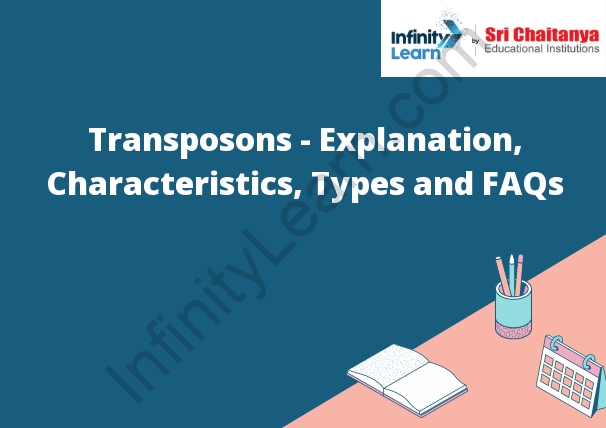Table of Contents
What are Transposons?
Transposons – Explanation: Transposons are small pieces of DNA that can move around the genome. They are often called “jumping genes” because they can jump from one place to another in the genome.
Types of Transposons
There are two types of transposons:
1. Retrotransposons: These transposons use a protein called reverse transcriptase to copy themselves from one place in the genome to another.
2. DNA transposons: These transposons move directly from one place in the genome to another without using reverse transcriptase.

Who Discovered Transposons
Transposons were discovered by Barbara McClintock in the 1940s. McClintock was a biologist who studied maize, and she observed that certain segments of the maize genome were able to move around, or “jump.” She called these segments transposons, and she was the first to describe their properties.
Transposon Definition
- Transposons are genetic elements that can move around the genome. They are found in most organisms and also play a role in genome evolution.
- A transposon is a DNA sequence that can change its position within the genome. Transposons can move around the genome, and can sometimes copy themselves and insert themselves into other parts of the genome. Transposons can cause genetic changes, and can sometimes lead to diseases.
Characteristics of Transposons
Transposons are pieces of DNA that can move from one place to another in the genome. They can copy themselves and insert themselves into new places in the genome. This can cause changes in the DNA sequence and can lead to mutations.
Simple Transposons
- A transposon is a piece of DNA that can move from one place to another in the genome. This can cause changes in the gene sequence, and can sometimes lead to disease.
- A transposon is a DNA sequence that can move from one location to another within the genome. This can be a very useful mechanism for geneticists, as it can allow them to alter the genome of a particular organism. There are two types of transposons: simple and complex.
- Simple transposons are much smaller than complex transposons, and they can only move a limited number of times. This makes them less efficient, but they are also less likely to cause mutations. Complex transposons are larger, and they can move more often. This makes them more likely to cause mutations, but it also allows them to spread more easily.
- Both simple and complex transposons can be used to modify the genome of an organism. This can be a very useful tool for scientists, as it can allow them to change the characteristics of an organism. For example, if they want to create a new strain of bacteria that is resistant to antibiotics, they can use a transposon to add this trait to the genome.
- Transposons are also useful for studying genetics. By examining the movement of transposons, scientists can learn more about how genes work and how they are regulated. However this information can used to develop new treatments for genetic disorders.
Tn or Complex Transposons
Tn or Complex Transposons is a family of transposons that are found in bacteria. These transposons are made up of two parts: a transposase enzyme and a DNA fragment. The transposase enzyme is responsible for the movement of the DNA fragment.
Retrotransposons
Retrotransposons are mobile genetic elements that can move around the genome. Therefore they found in many different organisms, including plants, animals, and fungi. Retrotransposons can copy themselves and insert the copies into new places in the genome. This can cause changes in the DNA, which can lead to new traits or diseases.









